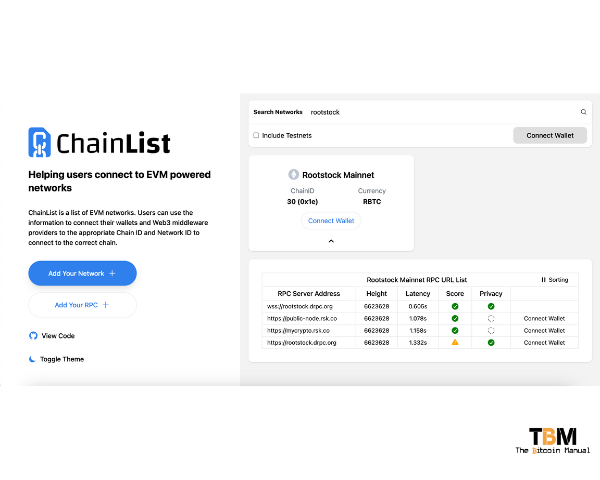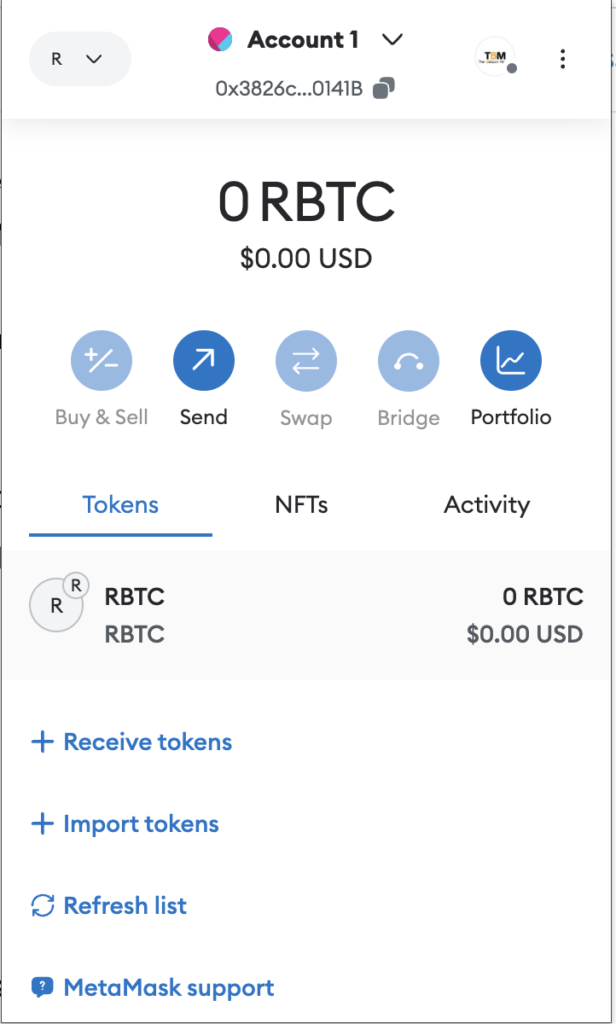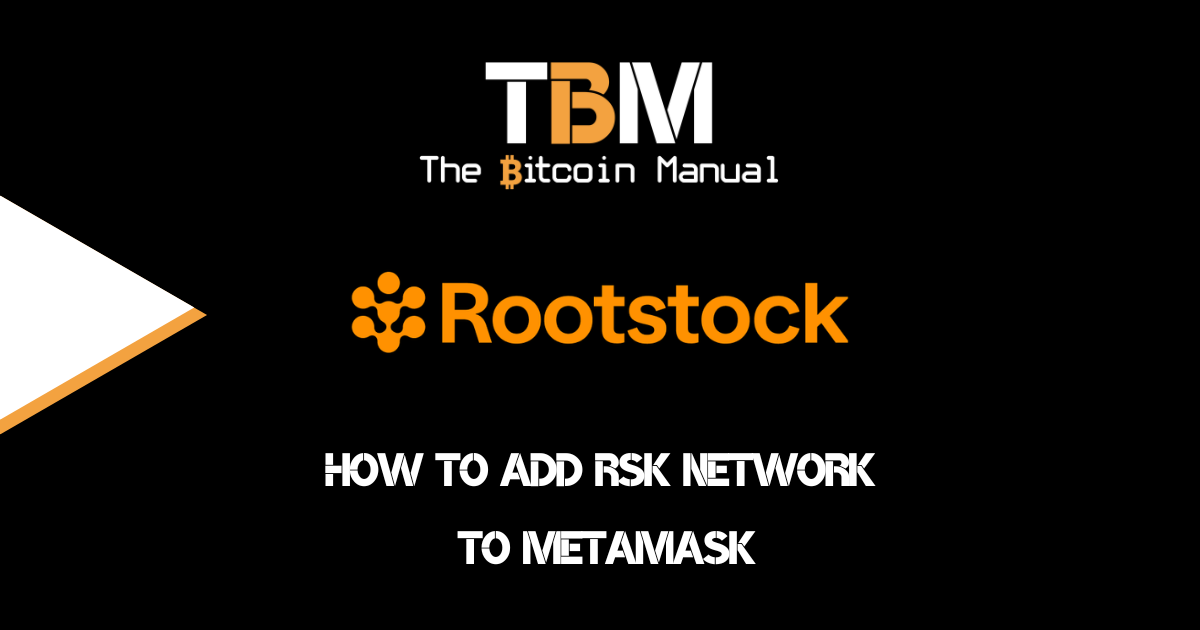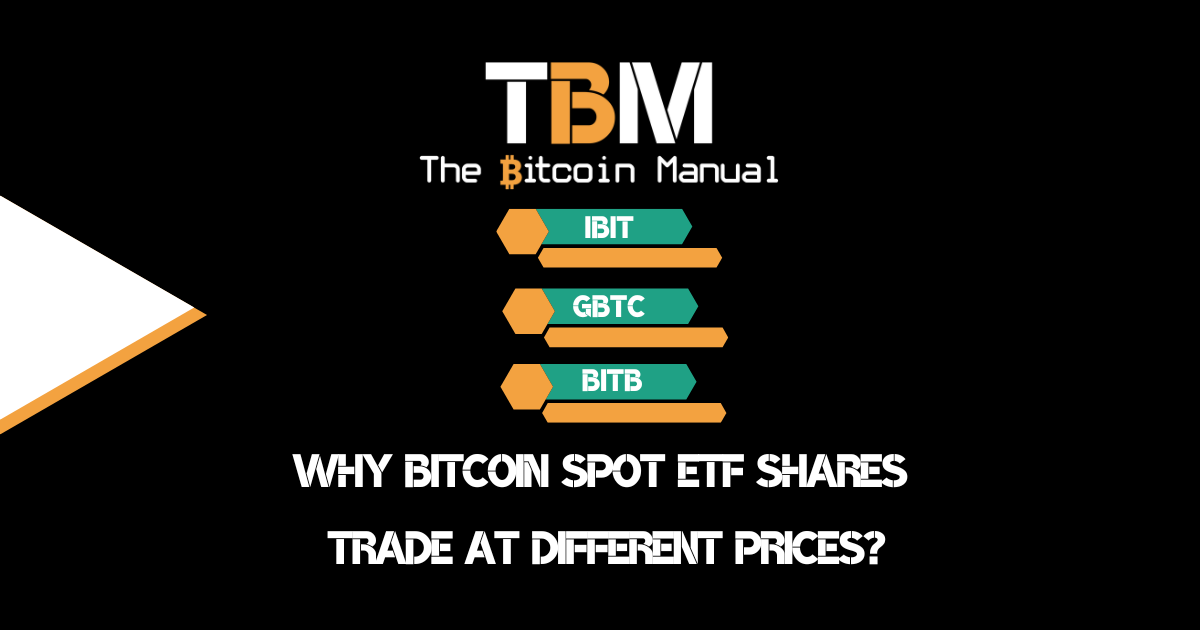When you dive into Bitcoin scaling, you’ll likely end up down the Lightning rabbit hole, with more than enough reading, videos and tutorials to keep you busy for a few months. While Lightning remains the premier scaling solution, there are other methods of taking your Bitcoin activity off-chain, all with different trade-offs.
Currently, if you’re not too keen on setting up payment channels on your Lightning node, you can use a sidechain instead. Bitcoin offers two sidechain options right now, Liquid and Rootstock.
While Liquid operates as a fork of the base chain, with additional opcode support and the removal of proof of work for a federated security model/ Rootstock, it is an alternative Bitcoin sidechain that maintains the proof of work consensus but opts to embrace the EVM standard for its blockchain.
Rootstock was launched in January 2018, becoming the only Bitcoin sidechain to be secured by Bitcoin’s hashing power through a merged mining process so side chain revenue returns to miners. This sidechain leverages Bitcoin’s security while enabling Ethereum-compatible smart contracts to reduce transaction costs and improve scalability.
Since RSK runs on the Ethereum Virtual Machine (EVM), It allows for smart contracts and decentralized applications (dApps). To interact with Rootstock, you’ll need to add the RSK network to your EVM wallet, like MetaMask.
Step-by-Step Guide
- Open Metamask: Ensure you have the MetaMask extension installed in your browser.
- Access Network Settings: Click on the network dropdown in the top right corner of your MetaMask interface and select “Add Network.”
- Enter Network Details: Fill in the following information:
- Network Name: RSK Mainnet
- New RPC URL: https://public-node.rsk.co/
- Chain ID: 30
- Currency Symbol: RBTC
- Block Explorer URL: https://explorer.rsk.co/
- Save Network: Click “Save” to add the RSK network to your MetaMask.
Additional setup tips
- Double-check the details: Ensure the network information is correct to avoid issues.
- Security: Always prioritize the security of your MetaMask wallet by using a strong password and enabling two-factor authentication.
- Update MetaMask: Keep your MetaMask extension updated to the latest version for optimal performance and security.
- Test Transactions: When sending funds for the first time, start with a small amount to ensure everything works as expected.
Using Chainlist (Optional)
If you’re lazy and prefer to trust and not verify, you can opt for the quick and dirty one-click method using Chainlist, a platform that aggregates network information. Chainlist maintains a list of all the EVM-compatible chains and allows you to set up your wallet from scratch by selecting the preferred network and pushing the settings directly to Metamask.
- Visit the Chainlist website: https://chainlist.org/
- Connect your MetaMask wallet.
- Search for “RSK” and select the RSK Mainnet.
- Click “Add to MetaMask.”
While this method is easier, you never know when a site might be compromised, and you could be signing over more than you bargained for, so be careful and maybe double-check with the settings above to make sure you’re on the right network.

Troubleshooting your MetaMask
If you encounter issues, double-check the network details and ensure you’re connected to the correct RPC URL. If problems persist, try restarting your browser or using the MetaMask extension.
If you’ve followed the steps correctly, you should now see the RSK network added to your MetaMask wallet, and you can start using the RSK network immediately to receive funds. Don’t worry if there’s no official branding for the token and network; it will work just fine. You are also using someone else’s node to connect to the network, which you can swap out for your won RSK self-run node, but that’s a tutorial for another day.
If you’re familiar with EVM chains like Ethereum, you should be comfortable with the user flow and experience. As a recovering former shitcoiner myself, this setup does give me rug-pull PTSD from my days of ICOs and airdrop farming back in 2017.

Note: Even after setup, the wallet might also give you some wonky responses where the currency may be mistakenly displayed as ETH within some MetaMask or dApp screens since that’s usually the default, even if you are using the RSK network that uses rBTC as its native token.
RSK keeps going on about it’s business
According to data from its native Block Explorer, Rootstock has 87,668 active accounts, maintains 2,795 RBTC in its side chain, and has surpassed 13 million total transactions, with over 670k transactions over the last three months.
This significant increase highlights the growing adoption of the sidechain, which offers a secure and reliable environment for building on Bitcoin. With over 60% of Bitcoin’s hash rate ensuring the network’s security and 100% uptime since its launch in January 2018, Rootstock stands out as a premier destination for development on Bitcoin.
In the last three months, more than 25 dApps and protocols have joined the Rootstock ecosystem, offering users new innovative ways to interact with the platform.
Key integrations with AMMs, DEXs and other EVM dapps have helped grow the RSK brand and user base, with more coming to development on Rootstock, as the switch to add support for another chain isn’t all that complicated.
In the last year, RSK has been added to the following services;
- Artoshi
- Bitget
- Chainport
- Dega
- Etherspot
- Galxe
- Gelato
- iZUMi
- Kickspad
- L bank Exchange
- LiFi
- Merkl
- oooo
- OpenOcean
- Rubic
- Sailing
- Satoshi
- SimpleFi
- Steer
- SuperLauncher
- SushiSwap
- Umbrella
- UniFi
- Uniswap
These new collaborations highlight the growing attractiveness of the platform for developers and users who likely want to try and use BTC in a host of DEFI protocols. Primarily, the motivation is to earn revenue from swap fees from liquidity pools or to use Bitcoin as collateral for loans—dangerous games to play even with the most pristine collateral you can find in BTC.
Improvement Proposals of Rootstock (RSKIPs)
Looking to the future, Rootstock has outlined an ambitious roadmap for the next 12 months, promising significant improvements that will further strengthen the platform.
Among the main objectives are reducing transaction confirmation times to just 5 seconds and enabling non-custodial swaps between Lightning Network and Rootstock. These improvements aim to increase transaction speed, improve usability, and further decentralise the network.
The roadmap includes a series of Rootstock Improvement Proposals (RSKIPs) that address various aspects of the platform:
- Reduction of transaction confirmation times: going from 30 to just 5 seconds, greatly improving the speed of the network.
- Non-custodial swaps: enable exchanges between Lightning Network (LN-BTC) and Rootstock (RBTC) through Boltz.
- Evolution of the PowPeg: integrating a 2-Way Peg compatible with SegWit, increasing the number of entities supervising the signing of Bitcoin transactions to over 60 and reducing peg-out fees.
- Bridge for native Bitcoin assets: allow Runes tokens to flow freely between the Bitcoin mainchain and Rootstock.
- Development of a trust-minimized bridge: prepare the development of a truly trust-minimized Bitcoin/Rootstock bridge, using BitVMX without requiring changes to the Bitcoin consensus protocol.
What’s the appeal for a Bitcoiner?
The EVM and RVM are compatible in that they support the same op-codes and, therefore, can run the same smart contracts. However, the price of each op-code (measured in units known as gas) differs between EVM and RVM; thus, the total gas consumed in various transactions is different.
Basically, you could port anything you see on other chains to RVM, or those dapps could support RSK, and you could interact with them directly as if you were using ETH, but instead, you would use rBTC and any tokens hosted on the Rootstock chain.
Since I have no interest in DEFI, I looked into whether Rootstock could be a viable method of acquiring stablecoins from a local vendor and moving it back to Bitcoin, and I was pretty disappointed.
I thought maybe if I purchased USDT on Ethereum, I could swap it for rBTC and peg out to Bitcoin, but the reality was finding the avenues to do it were a right pain in the arse and for no real cost saving. Sure, I am jumping between ecosystems and partly covering my tracks, but I don’t see it as an attractive alternative to mixing or using Lightning or Liquid as your go-between.
If you have a use for RSK, let me know in the comments below, and I’ll be happy to check it out.




